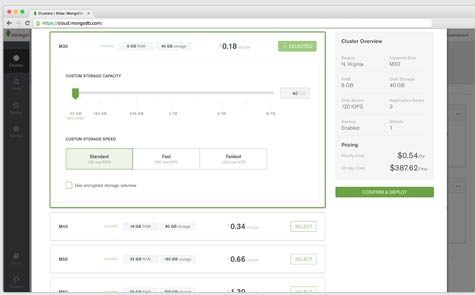As part of a larger trend that is seeing the management of databases increasingly pushed into the cloud, MongoDB announced today at a MongoDB World 2016 conference that it is making its namesake document database available as a cloud service.
Initially available on Amazon Web Services (AWS), MongoDB Atlas is destined to be deployed on Microsoft Azure and the Google Cloud Platform as well.
While previewing version 3.4 of MongoDB due out later this year, which among other things supports sharding to increase availability, MongoDB CTO Eliot Horowitz told conference attendees that MongoDB is the simplest way to run the most robust implementation of MongoDB. Horowitz says a database in the cloud needs to achieve a level of elasticity that eliminates the need for IT organizations to ever have to think about it again. Developers, added Horowitz, should not find themselves spending most of their time serving the needs of their data and the database systems in which that data is housed. In contrast, Horowitz says IT organizations can spin up a MongoDB Atlas in less than five minutes.
In general, Horowitz says document databases have become popular because they provide a more natural construct for building applications in a database that humans can more naturally read and understand. In addition, Horowitz notes that document databases don’t incur the overhead of a traditional relational database or require a database administrator (DBA) to define a schema.
Part of the so-called NoSQL movement, MongoDB and other document databases do support multiple flavors of SQL as well as other traditional database constructs. That approach has already lead to the downloading of over 20 million copies of MongoDB. To further that adoption, MongoDB also announced today a MongoDB Connector for Apache Spark, which integrates the MongoDB database with the open source in-memory framework for processing analytics in memory.
Like most other providers of databases, MongoDB is moving responsibility for managing the database away from internal IT organizations. Instead, the database is managed by the vendor on their behalf as a managed database-as-a-service (DBaaS) offering.
The number of IT organizations that will opt for a managed DBaaS remains to be seen. In fact, for that reason, MongoDB also provides tools for managing MongoDB on premise and in hybrid cloud computing environments. But given all the pressures on IT organizations these days, the idea that someone else should be managing the underlying infrastructure on their behalf becomes more attractive with each passing day.




